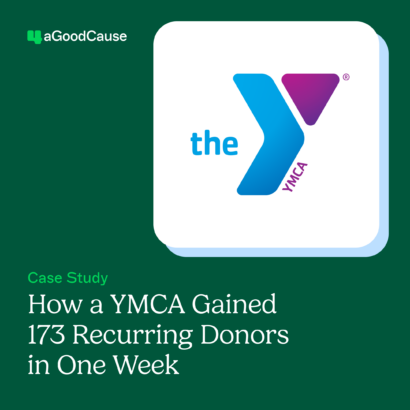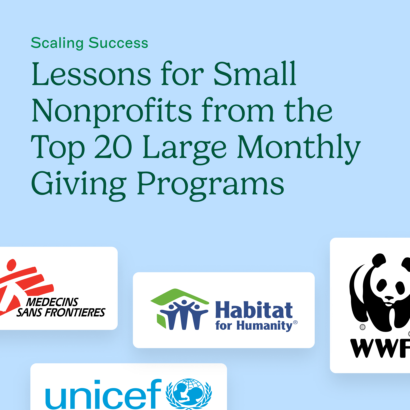A new year is a great time to evaluate your donor touchpoints and ensure that your donors (or potential donors) feel welcome as soon as they engage with you. Oftentimes, we concentrate on the end result or action—their donation and how we thank them for their gifts. But what about at the onset of the relationship? Do you have a good process in place for welcoming others to your community?
First impressions are important and, first actions by way of email can keep donors and prospects engaged for the long haul. In fact, the average open rate for a welcome email is 82% (GetResponse). That is higher than any average open rate for other email types. If you can get in front of your audience at the get-go, you may have a donor, volunteer or general brand ambassador for life (or at least, for a long while).
Develop and automate welcome emails based on action type
First, set the stage for the cadence and timing of your welcome emails. Anytime someone provides you with their email address, they should receive an automated welcome email from your organization. Below, we’ll talk about just what to include in those welcome emails, but before you schedule them, think about the types of actions that may elicit such a response.
Welcome emails should be triggered by different actions such as:
- Newsletter or mailing list sign-up
- Online donation
- Direct contact, in-person or virtual introduction
- Event registration
- Content download
Determine which action(s) taken by your audiences will trigger which thank you email type. Set up automation for those emails to send as soon as the action is taken. Using a combination of your CRM and email marketing software is a great way to automate this process.
3 components of a welcome email
The beauty of email automation is that you can set up your welcome emails ahead of time and program them to send per the actions above. While the content may be slightly different in each email, the components can be similar. Ensure that your welcome emails contain the following.
Personalization
Speak to your readers as individuals. Use their first names whenever possible and thank them for taking the time to connect with you.
Your story
Remind your readers who you are and what you do. You can do this by including a short message from your president or executive director. You can input an infographic of your impact over the last year. You could even embed a short video clip that speaks to your organization and the community you serve.
Strong, single CTA
Your call to action (CTA) will depend on the action of your audience. For instance, if someone signed up for your general e-newsletter, you don’t want to come on strong out of the gate and ask for a donation right away (the same holds true for someone that already made a donation). Ideas for strong CTAs in welcome emails include:
- Inviting readers to your social media channels as additional ways to stay in touch
- Signing up for an upcoming event
- Asking readers to reply back to let you know why they joined/donated/etc.
In any case, don’t overwhelm your readers in your initial welcome emails. By sticking with one CTA you can build upon those throughout the year subsequent email messages. Plant the seed, as they say.
Looking for more guidance on using email for your nonprofit? Check out our ideas for staying connected through email and 5 email marketing ideas to retain donors.



